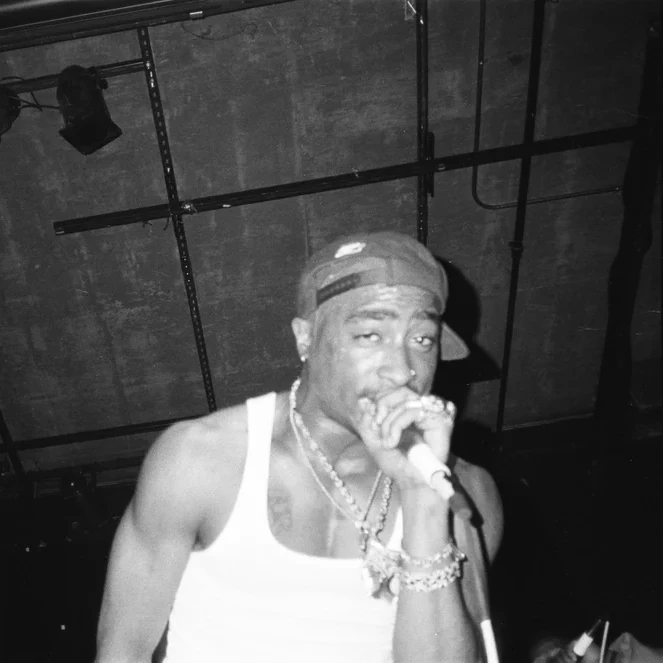2Pacalypse92 (Part 3)
Summary:
For the third and final installment of photographer Lawrence “Loupy D” Dotson’s 2Pacalypse92: 17 Shots _drops, we’re releasing the final six photos, a particularly special set because some of these photos were licensed for and used in the recent Hulu/FX Tupac docuseries, _Dear Mama: The Saga of Afeni and Tupac Shakur.
Description:
In 1991, Lawrence Dotson began writing under the pen name “Loupy D,” coined from a childhood nickname. He wrote articles, reviews, and commentary and conducted interviews for an underground hip-hop magazine called No Sellout.
Loupy D rubbed elbows with some of hip-hop’s top entertainers of the Golden Era: 2Pac, The Notorious B.I.G., Wu-Tang Clan, Keith Murray, Erykah Badu, and many others. In 1994, Loupy D became managing editor at Kronick Magazine, one of the most well-known and successful hip-hop indie ‘zines on the West Coast.
The Los Angeles photographer is giving fans the opportunity to get their hands on an exclusive Tupac NFT Collection. The collection consists of seventeen photos taken of Tupac performing in downtown L.A. at Prince’s Glam Slam West circa 1992.
In addition to the NFT, collectors will receive the original photo negative.
In these photos, we see through Loupy D’s eyes a first-hand witness of Tupac’s transition to bonafide solo artist that night at Glam Slam West. According to Loupy D, Tupac was a true performer who knew how to put on a show for the crowd on hand.
“The atmosphere was hyped,” Loupy D recalled in an interview. “The crowd was loving it. He put on a show. Think about this: he was a backup dancer for Digital Underground. So, he learned the value of using the stage to put on a show, not to stand there with a mic and spitting rhymes. He wasn’t just a rapper, he was a performer. He had a theater background. Tupac knew he had to engage the crowd.”
Tupac’s debut pre-Death Row Records album “2Pacalypse Now” touched on many facets of the African-American experience, aggressively and poetically expounding on issues such as racism, police brutality, poverty, black-on-black crime, and teenage pregnancy.
But even as his star was rising during hip-hop's first golden age, the timing of “2Pacalypse Now” was perhaps made more relevant by the broader social and cultural context of what was transpiring across America at the time, in particular, the tragic murder of Rodney King.
Though Tupac had started the album back in 1989 and spent 1991 refining it, his lyrics spoke presciently of the America that allowed four white LAPD police officers to savagely beat African-American motorist Rodney King to a bloody pulp after a high-speed car chase.
Though videos like this are now sadly commonplace, the broadcast of the King video in 1991 enlightened millions of Americans about the reality of racially motivated police brutality. After nearly 15 months, the police officers were cleared of all charges. The massive miscarriage of justice gave way to six days of rioting marked by widespread violence, burning, and looting.
While the above is a backward-looking understanding of a classic piece of art, Lawrence is likewise deeply connected to these events. He’s shot a wide collection of photos taken in and around his neighborhood of Baldwin Hills, including before/after photos of different areas of Los Angeles that were marred by the chaos of the L.A. Riots. Lawrence recalled the horrors of those moments recently in a staged reading called “Riot Day.”
Tupac Shakur could never have foreseen exactly how circumstances in 1992 or 2022 would play out. But his lyrics and thematic focus across his debut album make a convincing case that he would hardly be surprised














